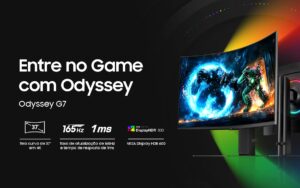
In this article we will bring our recommendations for the best video cards for a Gamer PC. A gaming computer’s main objective is to run games, and for this purpose the video card is one of the most relevant components, as it handles the creation of graphics on the screen.
In this post we have no newcomers since our guide for the first half of 2024. Neither AMD nor Nvidia have launched new products, with Nvidia preparing the launch of a potential RTX 50 line for the beginning of next year, following rumors, or some even talk about before that.
Time to update our video card recommendations, using the price and performance of products available on the market today as a reference.
🤑 Adrenaline offer groups 💵
❯ Telegram: https://t.me/ofertasadrenaline
❯ Whatsapp: https://bit.ly/canalofertasadrenaline
An important element of this article is the price comparison chart for people to see the progression of the costs of these plates, in addition to comparing the value of different products. Our cut will cover the costs of the second half of 2024, from 06/02 to 09/20. You can use this graphic below at will, and once again we would like to thank Edno Silva for his excellent work on PC Build Wizard (@pcbuildwizard), which makes it possible to generate this content:
As a performance reference, we have this general graph, using 3DMark Fire Strike, to get an idea of how the cards align. This graph is not representative of all performance scenarios, as different uses, graphics engines and applications can cause these relative positions to change:
We will use price levels to divide our suggestions, with different budgets. You can see all the cards that fit into each range in this interactive chart below. It uses the average prices of models in the last 30 days as a reference.
Some plates are marked in blackand the reason is the following: these are products that are discontinued or out of stock, and that they are priced completely out of context. This can be caused by last parts being “abandoned” in online retailers and, as they are the only ones found by the PC Build Wizard system, they end up registering these insane lost values. We mark them in a color that almost disappears into the background of the chart to avoid distracting from the relevant products.
And speaking of this division, we took the opportunity to make a selection: compare the average price of these cards versus the average price of these models in the guide for the second half of 2023.
Enough with introductions and methodology descriptions, it’s time to start talking about our recommendations!
Video version
Video card up to R$1 thousand

Recommendations:
- None, give preference to investing in the next level. Or stay on the integrated chart. Or buy something from China or a second-hand market.
Something that has been our mission, in these video card guide articles, is to encourage purchases in this segment. The crowd below R$1,000 tends to be made up of several “stolen”, with products that will only perform OK in light games, and with no chance of playing more recent games.
Here too there is the first deception. The RTX 3050 4GB has the same name as the original RTX 3050, but in addition to the reduction in memory, it also has about 10% fewer CUDA cores. The result? We don’t have tests with it, but the guys at Hardware Unboxed tested it and saw an average drop of 22%, putting it halfway between the GTX 1650 Super and the “real RTX 3050”.
These graphics include the RX 6600 and the RTX 3050, which are outside this price range, but which serve to give an insight into the performance gains that may be possible in some games. That’s if you can spend about 20 to 30% money on purchasing your next graphics card.
Which video card in 2024 is between R$1,000 and R$1,500

Recommendations:
Now we have arrived at the place we recommend you assemble your machine. The R$1,000 to R$1,500 range will house the two models with which we recommend starting your gaming machine, the Radeon RX 6600 and the GeForce RTX 3050.
Here the cards are already able to deliver 1080p gameplay in intermediate quality in several games, maintaining an average above 60fps. Recent heavier games, however, are already a problem for this segment, forcing intermediate settings and even low pre-sets, in some cases.
The Radeon RX 6600 continues to be the highlight, performing much better than the RTX 3050 in games focused on rasterization and remaining almost at the same level in games that include light Ray Tracing effects.
Video card between R$ 1.5 and 2 thousand

Recommendations:
When we get to models above R$1,500, we already have the most robust cards that deliver 1080p gameplay more smoothly, despite not necessarily having an Ultra configuration.
The main news here is that we finally have the GeForce RTX 4060 starting to become competitive. It delivers a performance gain proportional to the increase in cost over the RTX 3060, but has the advantage of technologies such as the DLSS frame generator and also greater efficiency in dealing with Ray Tracing.
The Radeon RX 7600 also has more attractive prices than in the previous article, and is starting to be a relevant option compared to the RX 6600. It costs around 30% more, but delivers this performance gain, and can reach around 40% in games with Ray Tracing, a technology that it performs best.
Which video card 2024 between R$ 2 and 3 thousand

Recommendations:
The immortal combo of this segment, the Radeon RX 6750 XT and the GeForce RTX 3060 Ti is still going strong. That is, not the RTX 3060 Ti, but its successor and almost equal card, the RTX 4060 Ti.
We have reached a level that already reaches 1080p in maximum quality, and which will also face Quad HD resolution (1440p) with a good level of quality, being an initial option for those who want to play games at that resolution. Anyone who wants to go heavy on the settings at this resolution, however, should buy cards with more performance margin.
Here we have a card with the sole function of delivering more VRAM. The Radeon RX 7600 XT performs almost the same as the RX 7600.
This emphasis on 16GB has more to do with other niche uses, such as machine learning in broad language models, LLMs, which make good use of 16GB. For gamers, more VRAM space is always welcome, but without an increase in graphics chip performance, little will be gained in games.
Video card between R$ 3 thousand and 4 thousand

Recommendations:
Here we have two signs among the strongest indications from our guide. The RX 7700 XT and GeForce RTX 4070 Super are high-performance video cards, which handle 1440p with ease and which tend to have good longevity, thanks to this additional performance margin.
Between the 7700 XT and 7800 XT, it is important to see the price difference, as they are cards close in performance. The 20% cost difference, measured in the data we use in this guide, is often not met with commensurate performance advances, so it may be more game to stop at the 7700 XT. But in closer cost scenarios, it might make sense to go from 7800 XT.
We also have another card with the sole aim of delivering 16GB of VRAM. The RTX 4060 Ti 16GB performs in games almost equal to the RTX 4060 Ti 8GB.
Which 2024 video card costs R$4,000 or more

Recommendations:
While we had more limited options in the initial ranges, if your budget exceeds R$4,000, both AMD and Nvidia will readily offer a good set of card options. The highlights go to the RTX 4070 Ti Super, which opens this segment, along with the RX 7900 GRE, with options with a good level of performance.
The Radeon RX 7900 XTX stands out for its very high performance in games that don’t involve Ray Tracing, at times approaching Nvidia cards that cost almost twice as much.
And finally, the RTX 4090 is a card that lives in its own reality. It is insanely expensive, but it also performs well above other current cards on the market. In rasterization only, it is not that much more powerful than the Radeon RX 7900 XTX.
But if you want to put the latest Ray Tracing technologies to the test, this is the only card that will take an Alan Wake 2 or a Cyberpunk 2077 in their most advanced Ray Tracing configuration and still manage to deliver a satisfactory frame rate. . It’s a lot of money, but it also comes with a lot of performance.
This concludes another guide for choosing video cards. As is traditional, now we go to the processor guide, doing this same analysis but now with the CPUs on the market, and finally the recommendation for complete machines. Until the next article!
*The sale of products indicated on this page may generate commission for Adrenaline.
Source: https://www.adrenaline.com.br/hardware/guia-de-placa-de-video-2024-segundo-semestre-2/


